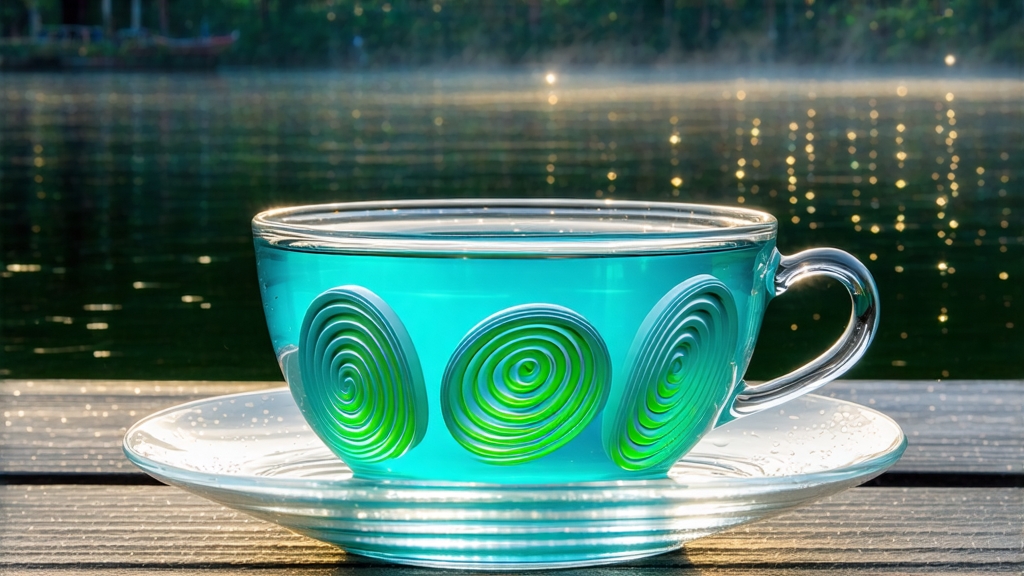
Tucked between the mist-laden hills of Dongting Mountain and the rippling waters of Lake Tai in Jiangsu Province, Biluochun—literally “Green Snail Spring”—has charmed Chinese emperors, poets, and now a new generation of global tea lovers for over a thousand years. Its tiny, spiral-shaped leaves may look delicate, yet they carry one of the most fragrant and nuanced profiles in the entire green-tea canon. To understand Biluochun is to step into a microclimate where fruit trees bloom above tea bushes, where monks once pressed leaves into tribute cakes, and where modern farmers still wake before sunrise to catch the dew that seals aroma.
Historical whispers place Biluochun’s birth during the Tang dynasty (618-907), but it entered the written record in earnest when the Kangxi Emperor (r. 1661-1722) tasted it on an inspection tour. Struck by its vivid jade color and “scary” intensity of aroma, he reportedly renamed it from “Xia Sha Ren Xiang” (“scary fragrance”) to the more elegant “Biluochun,” referencing its snail-shell curl and spring harvest. From that moment the tea joined the pantheon of Imperial Tributes, traveling in silk-lined crates to Beijing alongside inkstones and embroidered silks.
Today the appellation “Biluochun” is legally protected; only leaf plucked within the Dongting Dongshan and Xishan peninsulas may bear the name. Within this tiny zone growers distinguish two styles: “Wild Mountain” bushes seeded by birds and wind, and “Fruit-Tree Intercrop” gardens where tea plants grow under plum, peach, and apricot canopies. The latter is prized; petals fall onto tender buds, and their volatile esters are absorbed into the leaf, adding a natural floral top note impossible to replicate elsewhere.
Plucking begins when the Qingming festival approaches—usually late March—when each bud still wears a silvery down and has not yet unfurled into a leaf. Standard is “one bud with one just-opening leaf,” no longer than 2.5 cm. A skilled picker can gather only 500 grams of fresh leaf in a morning; it takes 55,000 buds to yield 500 grams of finished tea, explaining why authentic core-zone Biluochun commands prices higher than silver.
The craft that follows has changed little since Kangxi’s day. First comes “qing guo” (kill-green): 250 grams of leaf are tossed onto a drum pan heated to 180 °C. With bare hands the master agitates the leaf for precisely 3–4 minutes, feeling for the moment when cells burst and grassy compounds vaporize yet enzymes are halted before oxidation sets in. Temperature is then dropped to 80 °C and the same leaf is rolled into tight spirals against the pan’s curved wall; this “tiao cha” phase lasts 15 minutes and gives Biluochun its signature curl. Finally a gentle 60 °C “ti xiang” (lift-fragrance) drying coaxes remaining moisture down to 6 % while locking in the fruity-floral bouquet. Throughout, the maker listens for the crackle of water vapor, smells for the shift from cut grass to peach skin, and watches for the color to settle into an even “cui lu” (jade green). No mechanized line can mimic these micro-adjustments.
To brew Biluochun respectfully, think of the leaves as tiny aromatic bombs that detonate in slow motion. Choose a tall glass or a 150 ml gaiwan; glass reveals the “tea dance” while gaiwan offers control. Water should be 75 °C—any hotter scalds the downy hairs and releases bitter tannins. Use 3 g of leaf for 200 ml, pouring the water first and then dropping the leaves on top so they sink vertically. Within 30 seconds the spirals unfurl like miniature ferns, releasing a pale champagne liquor. First infusions taste of white peach and fresh pea; second infusions add a hint of vanilla orchid; third infusions reveal a mineral tail reminiscent of wet slate. Steep each round 20 seconds longer, stopping when sweetness fades to distilled water. Good leaf yields five infusions; extraordinary leaf yields seven.
Tasting follows a three-breath rule. Sip, hold on the tongue while inhaling gently through the nose—this volatilizes aromatics into the retronasal passage. Sw